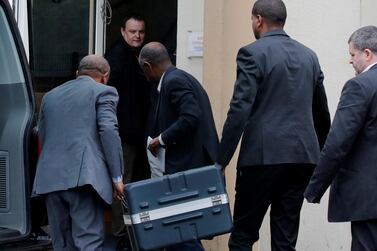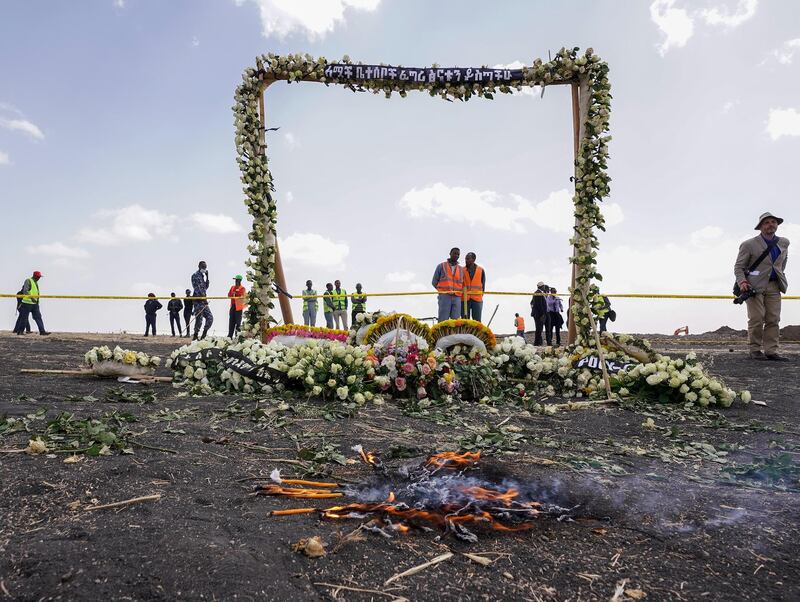A screw-like device found in the wreckage of the Boeing 737 Max that crashed last Sunday in Ethiopia indicates the plane was configured to dive, a piece of evidence that helped convince US regulators to ground the model, a person familiar with the investigation said late Thursday night.
Federal Aviation Administration chief Daniel Elwell on Wednesday cited unspecified evidence found at the crash scene as part of the justification for the agency to reverse course and temporarily halt flights of Boeing’s largest selling aircraft. Up until then, American regulators had held off as nation after nation had grounded the plane, Boeing’s best-selling jet model.
The piece of evidence was a so-called jackscrew, used to set the trim that raises and lowers the plane’s nose, according to the person, who requested anonymity to discuss the inquiry.
A preliminary review of the device and how it was configured at the time of the crash indicated that it was set to push down the nose, according to the person, who wasn’t authorized to speak publicly about the investigation.
The jackscrew, combined with a newly obtained satellite flight track of the plane, convinced the FAA that there were similarities to the October 29 crash of the same Max model off the coast of Indonesia. In the earlier accident, a safety feature on the Boeing aircraft was repeatedly trying to put the plane into a dive as a result of a malfunction.
All 157 people aboard Ethiopian Airlines Flight 302 died early Sunday shortly after the plane took off. The pilot reported an unspecified problem and was trying to return to the airport. The plane crashed near Addis Ababa, Ethiopia’s capital. The plane’s crash-proof recorders have been sent to France to be analyzed.
The discovery of the jackscrew was earlier reported by NBC News.
Separately, flydubai, the UAE's sole operator of the 737 Max 8 and the manufacturer's second-biggest customer after Southwest Airlines, said that the aircraft is an “integral part” of its future strategy.
"Since our 13 Boeing 737 MAX 8 and 9 aircraft were grounded on 11 March following the General Civil Aviation Authorities (GCAA) Safety Decision, flydubai’s priority has been to minimise disruption to our passengers," said a spokesperson for the airline.
"We recognise this is a unique and complex situation underpinned by safety and regulation. There are a number of procedural factors that our experienced teams are working through.
"flydubai continues to work closely with its regulator and Boeing and we value our long-standing relationship with these partners. Our MAX aircraft remain an integral part of our strategy for the future."

















